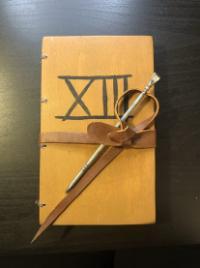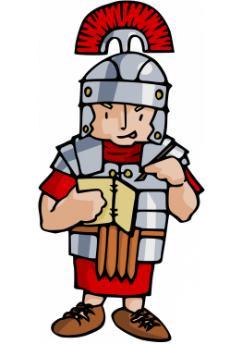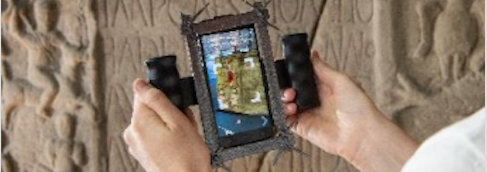Connecting with history
Published: 7 February 2022
Though the pandemic created some challenges, such as preventing physical visits and connections to the Antonine Wall and its local communities, it has also led to new and exciting opportunities. By offering resources such as images, animations, and 3D visualisations online, those stories can be accessed by, and tied to international contemporary audiences and their perspectives.
 Stories can bring history and hidden heritage to life for Creative Writing’s Dr Zoe Strachan. Being able to source and gather stories about heritage sites and their surrounding local areas plays a key role in her work. Visits to archives and special collections are valuable sources of inspiration and information; so too are in-person workshops, in which participants can share their formative experiences of heritage sites, such as the Antonine Wall. However, the global pandemic brought about significant changes in how Dr Strachan and her colleagues could gather stories, preventing those physical journeys and meetings from taking place. A digital approach was needed, and enabled Dr Strachan to discover new ways in which to gather and share stories about the Antonine Wall.
Stories can bring history and hidden heritage to life for Creative Writing’s Dr Zoe Strachan. Being able to source and gather stories about heritage sites and their surrounding local areas plays a key role in her work. Visits to archives and special collections are valuable sources of inspiration and information; so too are in-person workshops, in which participants can share their formative experiences of heritage sites, such as the Antonine Wall. However, the global pandemic brought about significant changes in how Dr Strachan and her colleagues could gather stories, preventing those physical journeys and meetings from taking place. A digital approach was needed, and enabled Dr Strachan to discover new ways in which to gather and share stories about the Antonine Wall.
Being able to share and connect with the Antonine Wall digitally is helping to create new opportunities, preserving its history whilst still uncovering stories that might have otherwise remained hidden for the years and generations to come. Though it connects Scotland to the Roman empire, as Dr Strachan notes, it has links with other countries through the people of different cultural heritages and languages who left their marks upon it. By offering resources such as images, animations, and 3D visualisations online, those stories can be accessed by, and tied to international contemporary audiences and their perspectives.
 Reaching wider audiences
Reaching wider audiences
Though the pandemic created some challenges, preventing physical visits and connections to the Antonine Wall and its local communities, Dr Strachan describes it as also having led to new and exciting opportunities. She and her colleagues were still able to work and access the Wall digitally. These new digital connections to the Antonine Wall and those close to it were valuable, but also allowed for participation and the sharing of information from further afield. Dr Strachan recalls that, prior to the pandemic, not everyone had the privilege to be able to visit the Antonine Wall in person. Now, those interested in the Antonine Wall can access it without leaving their desk. Though these connections may be remote, they do not need to be solitary or isolated. Dr Strachan notes that the ability to host meetings and workshops online during the pandemic helped many to find new ways to join together. By sharing their resources digitally and offering hybrid events, heritage sites, archives, and collections have the power to become more inclusive, reaching and inspiring wider audiences.
Strengthening Communities
Dr Strachan views digital accessibility as playing an increasingly important role in collaborating with non-academic partners and organisations. Universities are not closed repositories, but active parts within their respective communities. Sharing research is vital to supporting those communities and impacting them for the better. Digital access to sites and collections could become increasingly important when it comes to climate change too; as concerns grow over our carbon footprint, being able to remotely access historical documents or meet workshop participants is an additional benefit.
A collaboration with arts researchers is an opportunity for innovation and to have a positive impact upon the world. What stories can our researchers uncover within your organisation’s archives, or how might your collections inspire them? Perhaps their work can help you to strengthen connections within your community, or even forge new ones further afield?
If you want to know more about this activity or any of our other projects please get in touch.
First published: 7 February 2022


